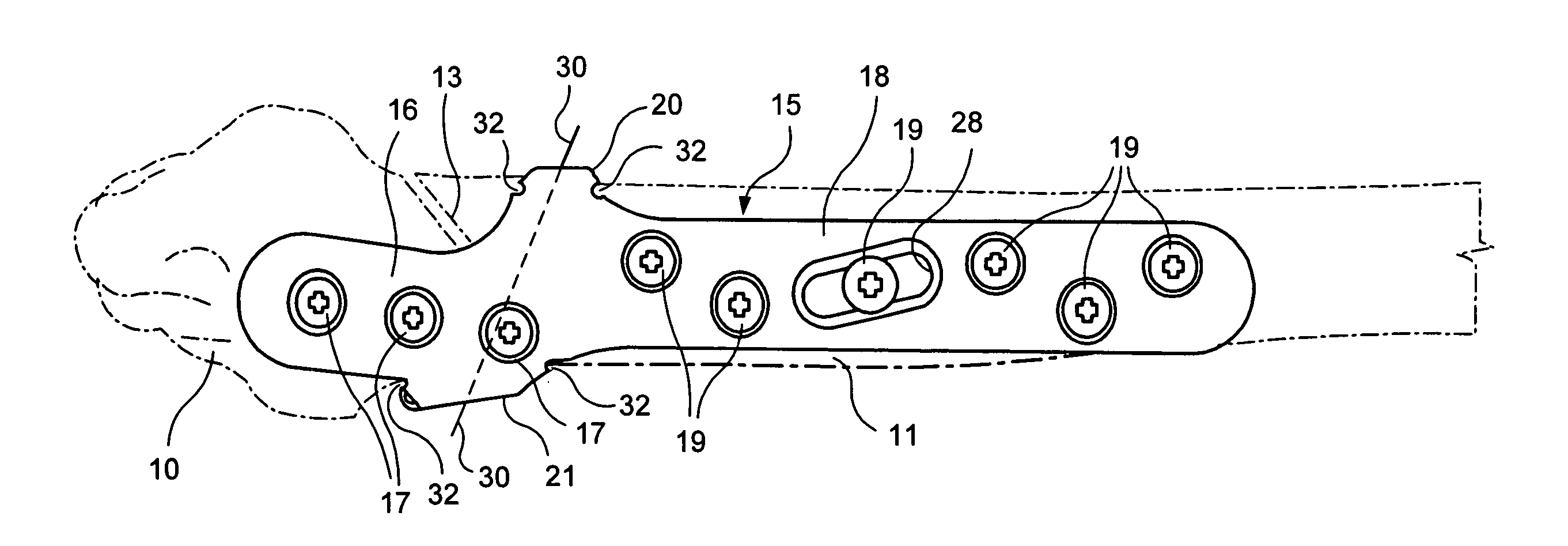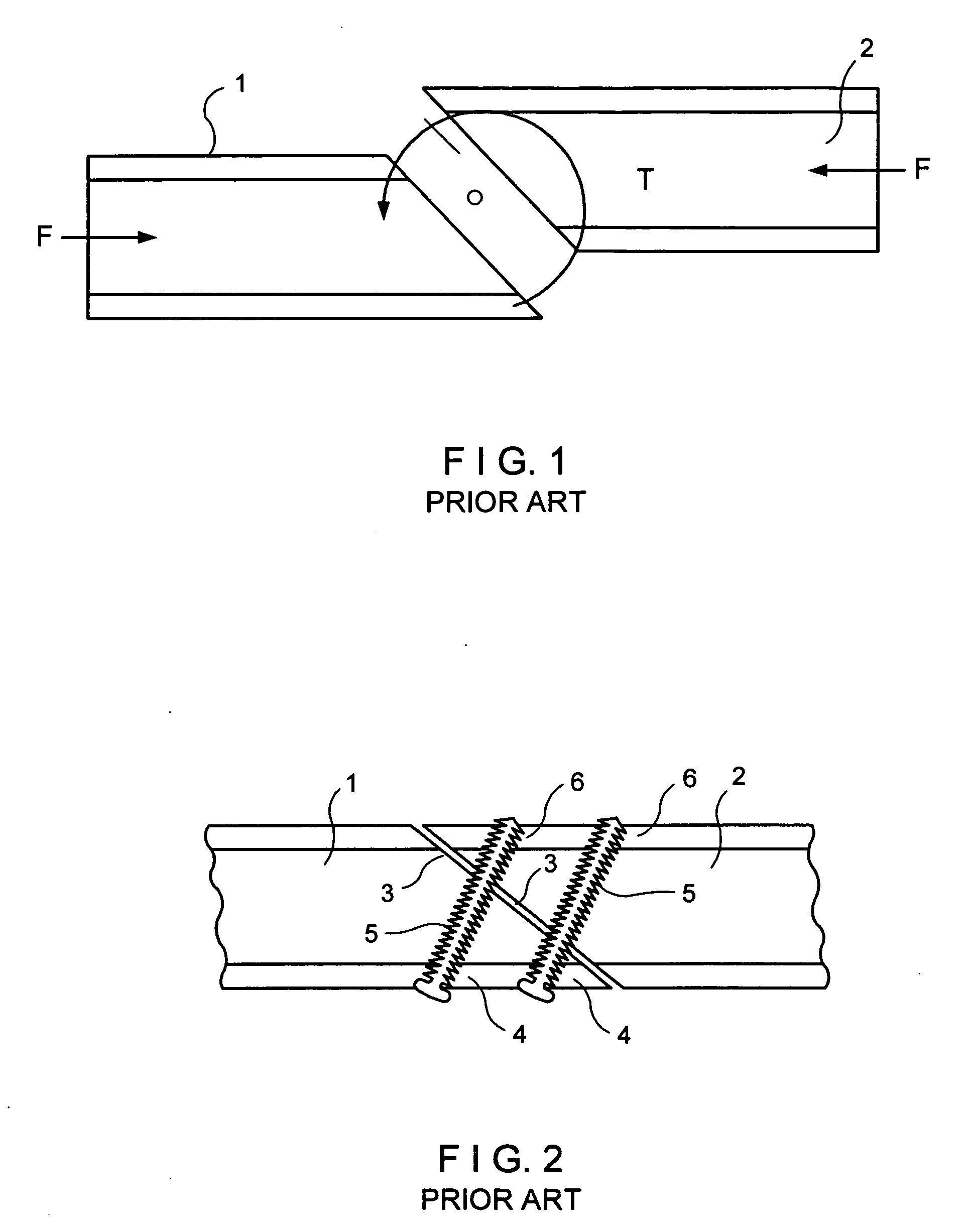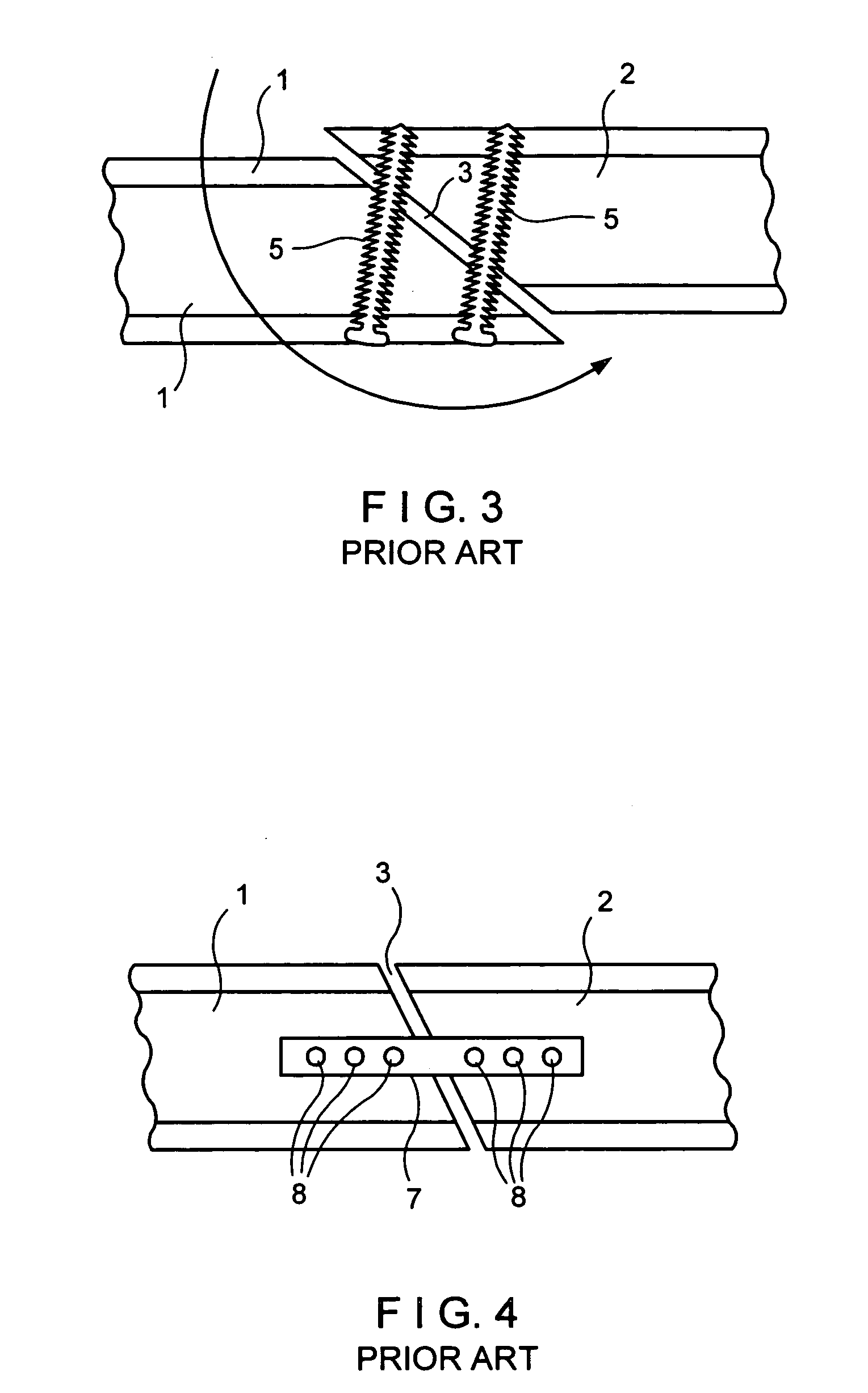Bone fixation device and method
a bone fixation device and bone technology, applied in the field of bone fixation devices, can solve the problems of short lateral malleolus oblique fracture, difficult to achieve stable fixation of two bone segments having an oblique contact surface, and easy so as to avoid further shortening of two bone fragments and facilitate healing
- Summary
- Abstract
- Description
- Claims
- Application Information
AI Technical Summary
Benefits of technology
Problems solved by technology
Method used
Image
Examples
Embodiment Construction
[0047] Referring to FIGS. 5 and 6, therein is shown distal and proximal bone segments or fragments 10, 11 on opposite sides of an oblique fracture 13 of the lateral malleolus bone 14 of the ankle. Although the invention will be described with reference to the lateral malleolus, it is applicable to oblique fractures of other long bones such as the ulna, humerus, tibia, femur etc.
[0048] Attached to the side of the bone 14 is a fixation plate 15 of a fixation implant for fixation of the fracture 13. The fixation plate 15 has a distal portion 16 adapted for being secured by bone screws 17 to the distal fragment 10 and a proximal portion 18 adapted to be secured to the proximal fragment 11 by bone screws 19.
[0049] The fixation plate 15 is made of surgical material such as titanium or stainless steel. Its length and thickness is a function of the bone which is fractured. In a typical case of the lateral malleolus, the thickness of plate 15 will be between 0.025″ and 0.375″ and its lengt...
PUM
 Login to View More
Login to View More Abstract
Description
Claims
Application Information
 Login to View More
Login to View More - R&D
- Intellectual Property
- Life Sciences
- Materials
- Tech Scout
- Unparalleled Data Quality
- Higher Quality Content
- 60% Fewer Hallucinations
Browse by: Latest US Patents, China's latest patents, Technical Efficacy Thesaurus, Application Domain, Technology Topic, Popular Technical Reports.
© 2025 PatSnap. All rights reserved.Legal|Privacy policy|Modern Slavery Act Transparency Statement|Sitemap|About US| Contact US: help@patsnap.com



